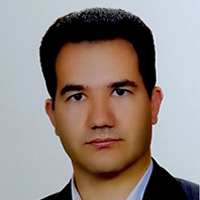Comparing runoff and sediment production in three land use in Fandoghlu area, Ardabil province
The process of converting rainfall into runoff in a region is complex and is affected by many different factors. There is a close relation between land use and erosion. Soil erosion involves the separation and transport of soil particles by runoff. Therefore, runoff production is an important process that is related to soil loss and environmental effects of agricultural operations due to its involvement in nutrient loss. As a result, it is necessary to study the amount of runoff produced as one of the main processes of soil erosion.Rainfall simulator allow repeated measurements in different fields to determine the factors affecting runoff and erosion. Despite the challenges, the use of simulators is common worldwide due to its many benefits in various fields of soil erosion and sediment production. In Iran this method was used in many researches with different targets. Kavian et al (2019) simulated the effect of herbaceous residues on runoff production, Golshan et al (2018) using the rainfall simulator compared the SWAT model and Regression model. In other countries other research can be mentioned the researches of Biddoccu et al (2016), Zhang et al (2018a) and Wang et al (2018). For this purpose, in the present study, which was carried out in one of the forest areas in the east of Ardabil province, called Fandoghlu forest area, the amount of runoff and sediment from the rainfall was measured and compared in different land uses using a rainfall simulator machine. In this study, the relationship between land use and runoff and sediment production was investigated in the Fandoghlu forest with 4378 ha area, using a rainfall simulator machine. The used rainfall simulator has 1 m2 area with the ability to adjust the intensity and duration of rainfall. The rainfall simulator machine was installed at 104 points with 21.867 mm / hr. rainfall intensity during the 15 mints in the three different land use consisting of forest, rang and agriculture. Soil sampling was performed from each land use from a depth of 0-20 cm. 34 samples were taken for forest use and 35 samples of intact and untouched soil were collected for each of the agricultural and rangeland uses, and a total of 104 soil samples were collected. The location of the points was recorded via the Global Positioning System (GPS).Using laboratory soil samples, parameters of initial soil moisture, bulk density, organic carbon, soil particle size distribution, true bulk density, total porosity, saturated hydraulic conductivity, saturated moisture, field capacity, permanent and susceptible wilting point usage and weight average of aggregate diameter were measured. The mean values of soil bulk density in forest, rangeland and agricultural uses were 0.881, 1.067 and 1.355 g / cm3, respectively. In rangeland use, the increase in specific gravity of the soil relative to the forest can be attributed to the kicking of livestock due to uncontrolled grazing (Ferreras et al., 2006). The mean values of true specific gravity and total soil porosity in forest were obtained. The rangeland and agricultural uses are equal to 1.905, 2.018 and 2.162, and 53.60, 46.46, 37.09 respectively. The reason for the reduction of true specific gravity in forest use is because the organic part of the soil inherently has a small true specific gravity. As by increasing the share of soil organic matter, the actual specific gravity decreases (Zhang et al., 2018b). In forest, rangeland and agricultural uses, the amount of runoff was equal to 868.5, 925 and 1425 ml/m2. Also, the amount of sediment concentration in each of the land uses was 1.937, 8.889 and 44.222, respectively. The results showed that vegetation, slope, soil characteristics and land use change have a significant effect on runoff and sediment components in the study area. Field studies and direct statistics of harvesting are very important in watershed management and estimating runoff and sediment production. The rainfall simulator used in this research can be transported to difficult areas that can provide integrated information from the watershed. The distribution of soil particle size on runoff and sediment components showed that there is a significant difference between different amounts of silt, clay and sand in each of the land uses and runoff volume. So that the amount of clay and silt from the forest to the pasture and arable land is reduced and the amount of sand is increased. Silty soils have low permeability due to low adhesion and porosity and as a result, more runoff volume. Therefore, land use management in this area can play a very important role in reducing runoff and fertile soil.
- حق عضویت دریافتی صرف حمایت از نشریات عضو و نگهداری، تکمیل و توسعه مگیران میشود.
- پرداخت حق اشتراک و دانلود مقالات اجازه بازنشر آن در سایر رسانههای چاپی و دیجیتال را به کاربر نمیدهد.



